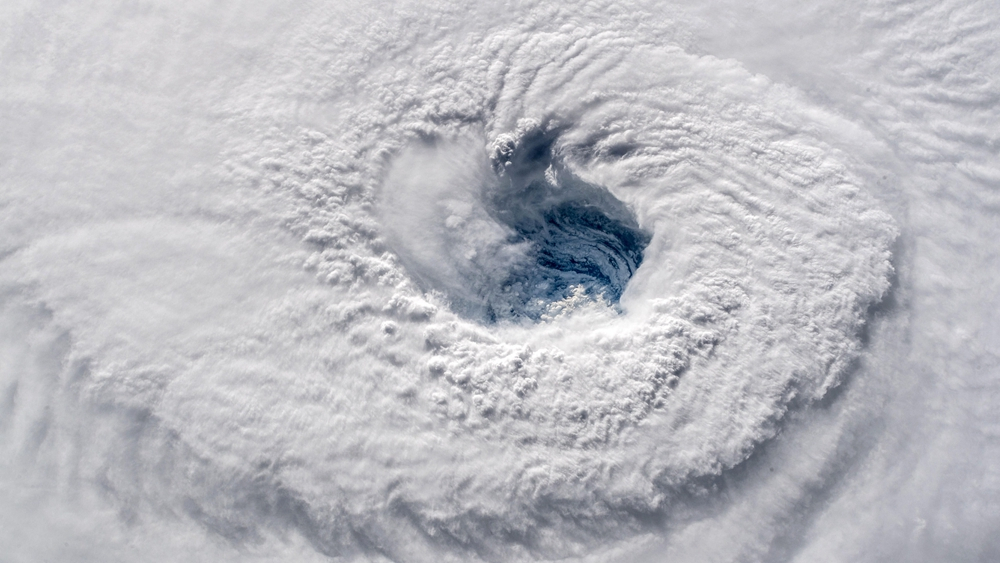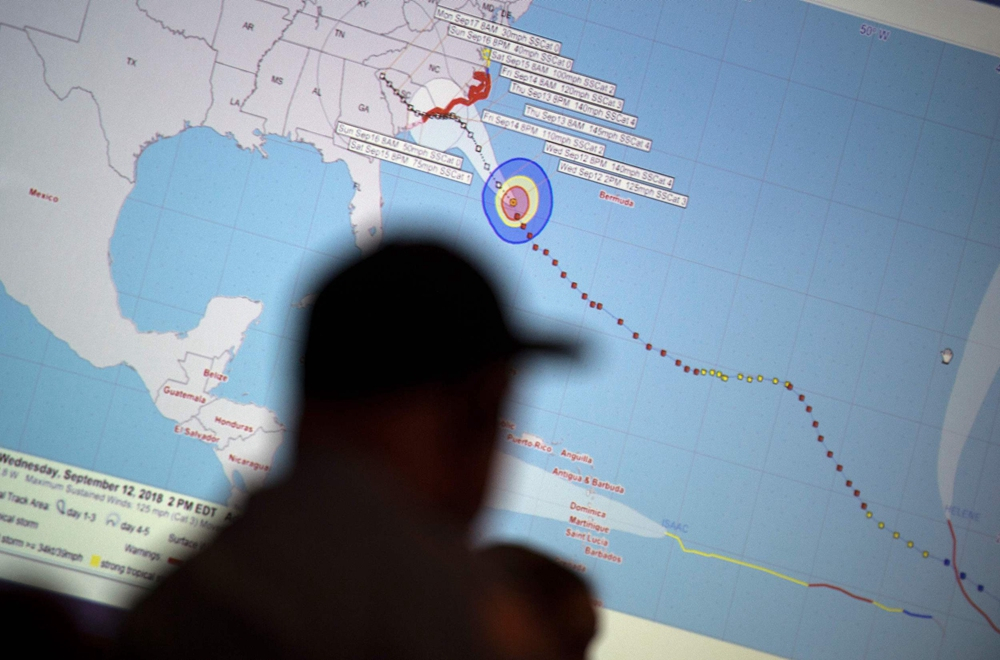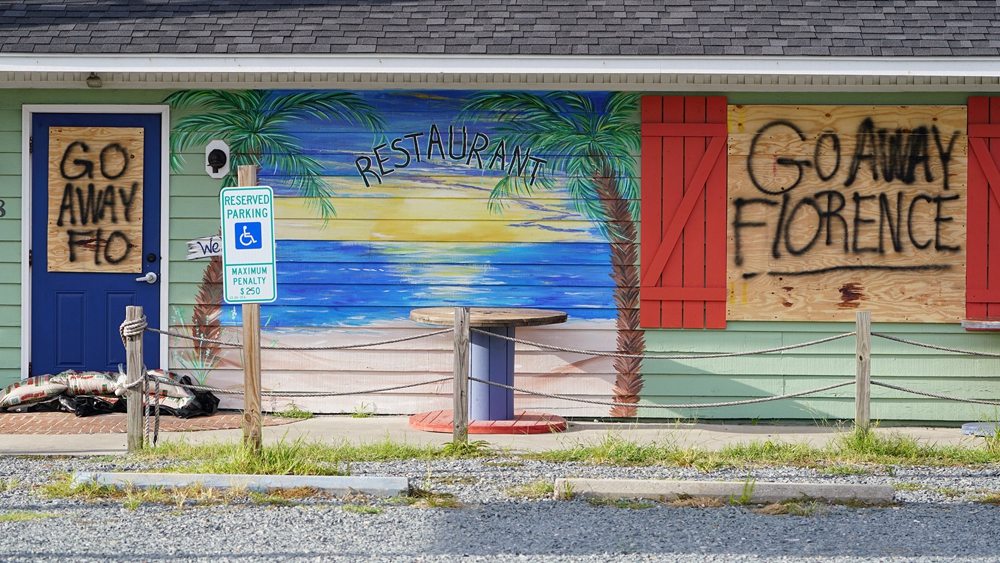
World
11:55, 13-Sep-2018
10 million in harm's way as Hurricane Florence nears US East Coast
Updated
11:37, 16-Sep-2018
CGTN

Hurricane Florence, growing in size and intensity, crept closer to the US East Coast on Wednesday as disaster mobilizations expanded south from the Carolinas into Georgia to counter the threat of fierce winds, deadly high seas and calamitous floods.
The National Hurricane Center (NHC) in Miami warned that Florence, weakening to Category 2 as it continues toward the Carolina coastal areas on Thursday, still poses a deadly threat to a wide stretch of the US Eastern Seaboard, capable of unleashing rain-fueled catastrophic flooding of rivers and low-lying areas.
Although its peak winds diminished, forecasters said the storm's total energy grew as its inner core and outlying bands of wind expanded.
"The time to prepare is almost over," North Carolina Governor Roy Cooper told a morning news conference. "Disaster is at the doorstep and it's coming in."

Emergency workers monitor the hurricane's progress at the Emergency operations center before the arrival of Hurricane Florence in Wilmington, North Carolina, September 12, 2018. /VCG Photo
Emergency workers monitor the hurricane's progress at the Emergency operations center before the arrival of Hurricane Florence in Wilmington, North Carolina, September 12, 2018. /VCG Photo
'Disaster at the doorstep'
Downpours and flooding would be especially severe, lasting for days, if the storm stalls over land. Heavy rains were forecast to extend into the Appalachians, affecting parts of Alabama, Tennessee, Kentucky and West Virginia.
Tens of thousands of homes and businesses could be flooded in North Carolina alone, Governor Cooper warned.
Georgia Governor Nathan Deal, concerned the storm would bring devastation south, issued an emergency declaration for all 159 counties in his state. Similar declarations were made earlier in North and South Carolina, Virginia, Maryland and the District of Columbia.
More than 1 million have been ordered to evacuate the coastlines of the Carolinas and Virginia. Authorities in Chatham County, Georgia, which borders South Carolina and includes the historic port city of Savannah, urged residents who feel unsafe "to evacuate as they see fit."

Messages are seen on a boarded up building before Hurricane Florence comes ashore on Oak Island, North Carolina, September 12, 2018. /VCG Photo
Messages are seen on a boarded up building before Hurricane Florence comes ashore on Oak Island, North Carolina, September 12, 2018. /VCG Photo
Millions in harm's way
An estimated 10 million people live in areas expected to be placed under a hurricane or storm advisory, said Marc Chenard of the US Weather Prediction Center.
The first tropical storm-force winds of at least 39 mph (63 kph) were forecast to hit the coast on Thursday.
Emergency preparations in the region included activating over 2,700 National Guard troops, stockpiling food, setting up shelters, switching traffic patterns so major roads led away from shore, and securing 16 nuclear power reactors in the Carolinas and Virginia.
Utility officials have warned that widespread power outages are likely and that it could take weeks to restore electricity.
Wilmington, North Carolina, just north of where Florence headed for shore, grew empty and quiet on Wednesday.

Evacuees make their way to a bus taking them to a shelter inland a day before the arrival of Hurricane Florence in Wilmington, North Carolina, September 12, 2018. /VCG Photo
Evacuees make their way to a bus taking them to a shelter inland a day before the arrival of Hurricane Florence in Wilmington, North Carolina, September 12, 2018. /VCG Photo
Officials in New Hanover County, which includes Wilmington, have stockpiled enough food and water for 60,000 people for four days, along with more than 28,000 tarps.
Shelters in the city were filling and some people were being bused inland to Raleigh, even though some residents there were told they might have to evacuate because of flooding.
"It's going to be bad," said Woody White, a county commissioner. "But no matter how bad it's going to be, it will pass and our job will be to rebuild this community together."
(Cover: Satellite image shows Hurricane Florence churning through the Atlantic Ocean toward the US East Coast, September 12, 2018. /VCG Photo)
Source(s): Reuters

SITEMAP
Copyright © 2018 CGTN. Beijing ICP prepared NO.16065310-3
Copyright © 2018 CGTN. Beijing ICP prepared NO.16065310-3